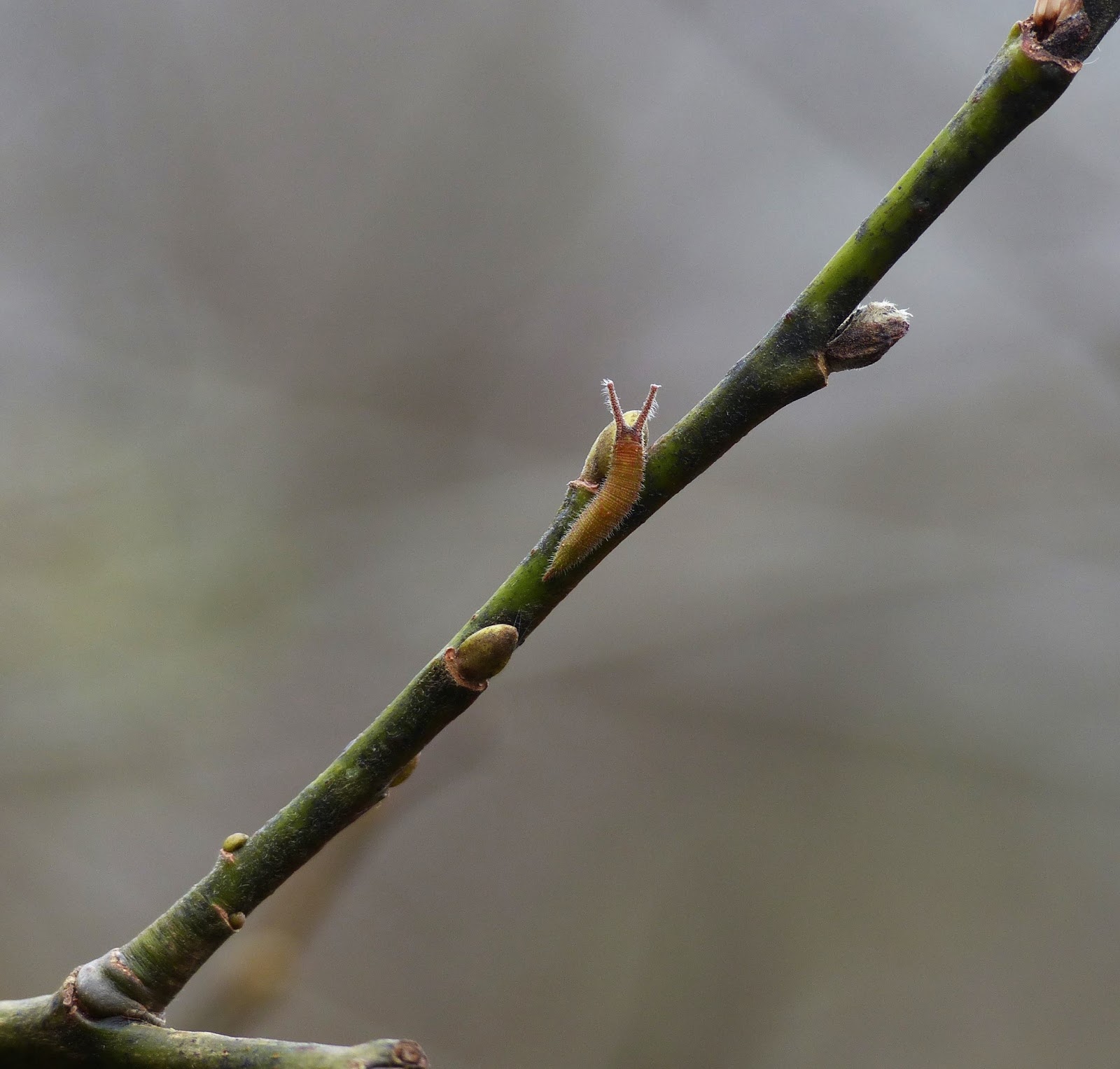The Dangle Leaf season is upon us!
At this time of year, Emperor larvae change colour, quit their feeding leaves, and go walkabout prior to conking out for five months, normally by a bud or in a fork.
Crucially, they have silked their feeding / seat leaves on assiduously. The leaf petiole join then breaks, leaving the vacated leaves dangling on thin strands of silk, for an indeterminate while.
'Dangle Leaf' can be a highly effective way of discovering Emperor larvae, and a very useful survey technique; but it's rather like Floo Powder in Harry Potter...
First instar feed leaf dangles can be rather indistinct, and can be imitated by some moth larvae, and dangles on narrow-leaved sallows are particularly small; but occasionally you find clusters of first & second instar feed leaves, like these:-
or these:-
More usually, you find a vacated dangling part-eaten leaf like this:-
Most distinctive of all are the third instar feed leaves:-
This one's wrapped itself around the stem:-
Note the broken petiole and the silk. That's iris, no one else does that (though spider silk can at times throw you).
Dangles can also contain bits of leaf stalks, which have been silked on too:-
Note the silk on the stem:-
Dangles on narrow-leaved sallows last longer, but are smaller and easily missed.
Dangles on broad-leaved sallows are easier to spot, but get blown off by gales and washed off by rain - though some in sheltered spots may persist long into the winter.
Dangles last better on sallows in the most sheltered spots, such as in gullies or on the edges of young conifer plantations.
The technique is to wander the woods on a day of good light with a gentle breeze, covering as many sallow stands as possible, and look for leaves - single or multi - spinning around madly in the air. Then home in on the 'pillar, which may be a few centimetres away, or a few metres distant. I carry a 2m long shepherd's crook.
It's rather like dry fly fishing for specimen Brown Trout on a chalk stream: a lot of wandering and intense observation, the last thing you do is cast.
There's a but coming up, and here it is: But there are early leaf-fall sallows, mainstream leaf-fall sallows and late-fall sallows (into early December), with much depending on when the first frosts arrive and sallow foliage health.
So, you have to do repeat-visits, checking regularly over a three week period. Sallows that have dropped 50-75% of their leaves are best, and ignore any that are still fully green (until later). Timing is everything.
This year the main Dangle Leaf season will probably run from November 11th to early December, but it may last till Christmas. Much depends on prevailing weather (don't venture out dangling after a storm, go before).
Enjoy... but beware of false prophets (many will come in my name): spider silk can sometimes generate Emperor-like dangles, Geometer moth larvae often silk-up small, usually uneaten leaves, and beware of broken stems.
This is not iris (far too much white stuff and no eating on the leaf) -

































